Koponyatorzítás
kapaalaH = koponya, sanskrit (Crania, skull)
English - hungarian mixed text
Angol - magyar vegyes szöveg
Ami hiányzik: Összefoglaló, hogy HOL, mely KORból, milyen TÍPUSÚ torzítás maradt fenn...
Near East
"Nevertheless, wide-scale practice of ACD in the Near East is evident only from the pre-pottery Neolithic B period (ca. 8,300-6,500). Cases of unquestionable ACD were reported from various countries throughout the Middle East: Israel (Kurth, 1981), Syria (Ferembach, 1970), Cyprus (Angel, 1953), (Senyurek, 1951), and Lebanon (Obzek, 1974). According to Menard (1977), artificial deformation of the head appears to have been relatively common also in the European Neolithic. Our study focused on artificial cranial deformation during the prepottery Neolithic B period. The practice of trephination and deforming the human skull in the ancient Middle East is reported in our study. Both "treatments" seem to have occur during the Neolithic and Chalcolithic periods. After the Neolithic, cranial deformation became relatively rare with while the frequency of trephination continued and even increased in Roman times."
 ..még koponyák:
..még koponyák:
"The earliest evidence of ACD occurs at least forty-five thousand years ago with the Shanidar I and 5 Neanderthal skulls from Iraq. Anthropologist Erik Trinkaus links this to the earliest evidence of purposeful burial of the dead in a reference I would presume surmises distinct respect in some way or another of those buried with ACD. The earliest reference to ACD occurs with the description by Hippocrates of some people from the Black Sea region whom he describes as having "an artificial elongation of the head by compression during infancy" and suggests that those with the longest heads were considered the most noble."
Egy fórumról:
"Such immense deformation across the entire occipital (rear) and parietal (upper side) areas of the skull could not result from binding without deformation being visible in the frontal area, which is not evident.
Birth defects across the entire occipital and parietal areas, while not impossible, seem highly unlikely because of the remarkable symmetry exhibited in all areas of the skull, including those effected by the deformations.
The terrain of the bone in the eye sockets contains incredibly subtle indentations and ridges that are perfectly symmetrical in both sockets, which simply have to have been formed by genetic directions rather than by deformations.
The rear deformation extends from the crown to very near the foramen magnum, an area impossible to reach by any binding device due to the thick neck muscles (even in a child) that surround and support the skull-spine connection.
Head binding cannot extend below the inion (the bump at the back of the head). Head binding leaves a gaping opening at the top where skull bones fail to fuse."
Neandervölgyi túlélése
(Jelek...)
"We saw that cystic fibrosis is a candidate but not very strong [64], [65], [66]. The big and prominent noses of Greater Europe can be another candidates. A third is the remnant of the Neanderthal occipital bun as a "bump in the center of the back part of your head", tells G. Morton #37, and states that he has "such a bump on the back of my head"."
"Binding Experts suggest the child's high degree of occipital (rear-skull) deformity would most likely have resulted from the cranial binding practiced by primitive cultures around the world. However, such binding never extends below the inion (the bump at the back of the head) because the human neck begins just below that point. Furthermore, squeezing a skull's upper bones out of their natural shape leaves them permanently separated, which results in a life-long "soft spot" at the top of the head."
"Neanderthal and modern man, such as larger teeth lacking any canines, brow ridges, an enlarged occipital bun, and different brain volume. "
Ha jól értelmezem, akkor bizonyíték van a neandervölgyi és a HSS keveredésére...Lásd Kárpát-medence. Állítólag a szlovák régészek szép számmal találtak ilyen fura hátsó koponyacsontot.
Az anatolian bump (inion) vagy magyarul nyakszirt kúp egy ősi csontkinövés a koponya hátsó csontján (occipital bone). Egyesek turk származást vélnek benne felfedezni, a németek szerint árja bélyeg, de a svédeknél csak walloon származékot jelöl. Megint mások szimpla anatoliai jegyet látnak benne. Ez a billog Európán és Kisázsián kívül máshol is előfordul, ami nem meglepő.
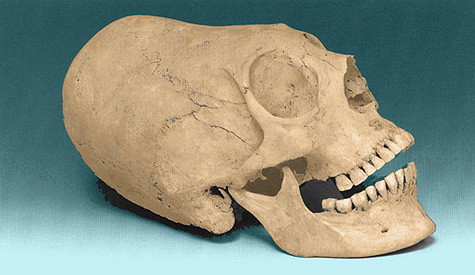
Torzított hun koponya. Vajon miért, és hogyan készítették?..
A legtöbb - földrajzban nem jártas - történész a xiongnukat a Góbi sivatag közepébe rajzolja. Tévesen. A xiongnuk lent délen a mai Saanxi tartomány környékén éltek. Még bukásuk után is csak Ordosz területéig vonultak vissza északra. Persze, fénykorukban az Araltól az óceánig, a Bajkáltól a Sárga folyó legdélebb pontjáig uralták a földet. (Szinte "Kara-Kitaj" birodalom volt..) Mongólia területén rengeteg hun sirt tártak fel. A mongolok bánatára nem igazán szienpi formák ezek a testek....
Attilát és hunjait sokszor írják le kutyafejű tatárként. Nos, mind a gótok, mind az alánok között gyakori volt a koponyatorzítás. Valakikre hasonlítani akartak a hunok... akár csak Amerikában v. Egyiptomban...
Koponyatorzítás Eurázsiában
"Zhirov (1940) was the first scholar to write a synthesis of cranial modification in ancient Russia. He developed a classificatory system for the various forms of deformation by associating each type with the features of a modifying apparatus.
Using material accessible to him at the time he described four main varieties of cranial vault modification in eastern Eurasia: occipital, coronal-occipital, occipitalparietal, and circular (Zhirov 1940).
Artificial cranial modification has ancient roots in Eurasia. The earliest cases in the archaeological literature date from the Bronze Age (ca. 2000—1000 BC; Firshtein 1974), among peoples of the Catacomb culture as well as those from southern Turkmenistan."
[Ezek a katakomba sirok később megtalálhatók a Pontus felett és Rómában is..]
"The first instances of cranial modification during the subsequent period are from the early Iron Age and date from 700 to 600 BC. These are found in the Southern Tagisken cemetery, located at the delta of the Syr Darya River east of the Aral Sea area (Fig. 1; Itina & Yablonsky 1997, pp. 73–74). This is within the territory of the earliest state in the Eurasian steppes, Chorasmia."
"Over time, the practice would be commonplace, seen at the Sakar-
Chaga cemeteries of northern Turkmenistan (ca. 600 – 400 BC) and eventually throughout the area occupied by the Chorasmian state."
Málta
A "hosszú koponyájú" nép BC 2500 előtt elérte Máltát. A Hal Saflienti hypogeumban találták ezeket az érdekes formájú koponyákat. A csontvázakat Brochtorff Circle régész tárta fel, aki kiemelte, hogy szokványos mesterséges koponyatorzításról van szó, amit vallási, esztétikai vagy egészségügyi okokból hajthattak végre.
Ez a népesség van gyanúba hozva Málta "kőkori" nagy építményeinek létrehozásával BC 4100 - BC 2500 között.
Walter B. Emery (1903-1971) régész, akinek nevéhez fűződik Saqqara feltárása a 30-as években, szintén talált ilyen torzított koponyákat. Állítása szerint ezek a torzított koponyájú emberek nem tartoztak Egyiptom őslakossága közé, de ott vezető pozícióban voltak. Néhány iskola szerint azonosíthatók Shemsu Horral, Hórusz népével. Málta szimbóluma az a méh, (ary,turk, Bit, máltai) ami Egyiptom szimbólumai között is fellelhető.
A torzított koponyákkal kapcsolatosan megkérdeztek orvosokat, de egyikük sem ismert olyan kórt, ami ilyen elváltozást okozna. A máltaival ellentétben a Kolumbusz előtti Amerikában feltárt hosszú koponyák egy részénél kimutatható a mesterséges létesítés nyoma.
Úgy tűnik, a térségből BC 2500 táján eltüntek ezek a hosszú koponyák. Viszont az észak-amerikai tavak vidékén az "adena nép" ekkortájt kezdte alkalmazni ezt a praktikát.
KOPONYATORZÍTÁS
„Túl a Maeotis tengeren él egy nép, a »nagyfejuek«, akik mihelyt megszületik gyermekük, és fejük még alakítható, formálni kezdik azt, kényszerítik, hogy hosszában nőjön, kötelékekkel veszik körül és mesterséges eszközöket alkalmaznak, hogy a fej alakját megváltoztassák”. Sem Hippokratésznek, sem Hérodotosznak nem adtak hitelt a 19. század derekáig, mindaddig amíg az ásatások során kezdtek előkerülni a „macrocephal” koponyák. Időközben rájöttek, hogy Közép- és Dél-Amerikában, valamint Franciaország egyes vidékein a huszadik századig élt e szokás. A koponyatorzítást Ázsiában, Afrikában, Dél-Amerikában és a népvándorláskori Európa egyes népei egyaránt végezték. Az ásatások hazánkban is számos torzított koponyát hoztak felszínre, amelyek etnikailag a gepidákhoz, hunokhoz, longobárdokhoz stb. köthetők (Pap 1983, 1984,1985).
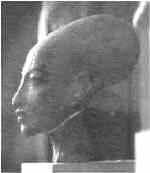 Egyiptombanban elso sorban a XVIII. dinasztia korában vált gyakorlattá, és úgy tunik a fáraócsalád elojoga lehetett. Körkörös kötéssel formázták a kisdedek fejét (27. kép), ennek eredményeként a homlok laposabbá, a hátsó koponyagödör és nyakszirt–tájék megnyúlttá vált (28. és 29. kép). Az így torzított koponyán többnyire megfigyelheto a kötés okozta besüppedés, s ezt híven tükrözi Tutanhamons fejszobra.
Egyiptombanban elso sorban a XVIII. dinasztia korában vált gyakorlattá, és úgy tunik a fáraócsalád elojoga lehetett. Körkörös kötéssel formázták a kisdedek fejét (27. kép), ennek eredményeként a homlok laposabbá, a hátsó koponyagödör és nyakszirt–tájék megnyúlttá vált (28. és 29. kép). Az így torzított koponyán többnyire megfigyelheto a kötés okozta besüppedés, s ezt híven tükrözi Tutanhamons fejszobra.
Mezoamerikában a társadalom minden rétegének tagja végezhetett koponyatorzítást, az Inka Birodalomban azonban csak az uralkodó családot „illette meg”. Az azték–maja kultúrkörben készült számos falfestmény maradt ránk arról, miként végezték a deformálást és mi lett a végeredmény.
A koponyatorzítás szokása a hun népek körében dívott, pl. alánok, gepidák, gótok.. Kínában nem volt jellemző a keleti hunoknál. Ezért a "kutyafejű" hunok az előbb felsorolt népek férfiai...
Angol nyelven
Beteg koponya, végén képekkel
Thüringia Németország
(hun koponyatorzítás népei egyike)
Zászlaja "piros-fehér". Címerpajzsán egy Árpádsávos madár.
"Haplogroups were defined by the 12 UEP markers according to a nomenclature modified from Rosser et al. (2000) and Weale et al. (2001) and are presented in figure 2. The correspondence between this nomenclature and that proposed
by the Y Chromosome Consortium (2002) is as follows: hg1= 5 P*(xR1a), hg2= 5 BR*(xDE,JR), hg3= 5 R1a1, hg4= 5 DE*(xE), hg7= 5 A3b2, hg8= 5 E3a, hg9= 5 J, hg16= 5 N3, hg20= 5 O2b, hg21= 5 E*(xE3a), hg26= 5 K*(xL,N3,O2b,P), hg28= 5 L, hg29= 5 R1a*, hg37= 5 Y*(xBR,A3b2)."
Koponyatorzítás a Kárpát medencében
"The earliest European evidence was found among the Sarmatian relics of Tirgşor, Wallachia (Romania) and can be dated back to the 3rd century AD. In the European continent it can be regarded as a custom of eastern origin. The first presumable people to conduct artificial cranial deformation were the Alans. The custom was later taken over by the Sarmatians, the Huns, the Lombards, the Thurings, the Burgunds, the Gepids, etc. (1)."
"Artificially deformed skulls have been found in numerous countries of Central and Western Europe (Austria, Switzerland, Germany, Italy, France, etc.), but the greatest amount of such skulls have been found in the today territory of Hungary."
"Most of the deformed skulls, however, derive from 5-6th century Gepid cemeteries in Hungary."
"Signs of artificial cranial deformation have been found on remains of many other peoples of the same period, e.g.: the Alans, the Goths, the Quads and other Germanic populations (1)." [A hunok...P.I.]
Az ember származása
KOPONYATORZÍTÁS
Mint láthatjuk, a koponyatorzítás Baktriában sem volt ismeretlen. Balk környékén, de a proto-bulgároknál is eléggé elterjedt volt. Némelyik bulgár temetőben a koponyák 80%-a torzított. Ezek a proto bulgárok sok mindent átvettek a kusánoktól (madaraktól) a fegyvergyártáson át a kerámiagyártásig.
Hasonlóképpen elterjedt volt a szarmatáknál és az alánoknál, gótoknál is.
(Pit graves, artificial skull deformation, Sarmatians, Northern Bactria)
...Inhumation was the most common way of burial. However, a part of the Proto-Bulgarians or most probably, some of the accompanying them to the Balkans tribes, practised cremation....
..Specific to the Danube Proto-Bulgarians is also the artificial deformation of the skulls, in some necropolises found in 80% of the material....
...Archaeologically detected is the introduction of Central Asian objects - weapons, luxury goods and pottery, especially red-clay polished pottery, similar to that of the Kushans...
...Graves with niches and examples of artificial skull deformation are attested in a number of necropolises in Central Asia - near Tien-Shan and Pamir-Altaj in the Talas valley and in Khoresm. ..
...in the Late Sarmatian there was a considerable change in the racial type, evidencing a penetration of people of anthropological type characteristic for the region between the rivers Amu Darya and Sur Darya - brachiocrany, wide-spread artificial skull deformation.. (Roxalánok..)
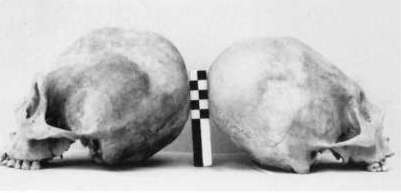 Mesterséges koponyatorzítás - Wikipédia
Mesterséges koponyatorzítás - Wikipédia
A Közép-Európába keletről érkező népek azonosításakor nagyon sok félreértelmezés született. Nem ismerték fel a torzítás okozta változásokat. Az erős körkörös kötések az orrtövet laposabbá, szélesebbé, az arcot előreugróvá {prognath}, a járomívet {arcus zigomaticum} pedig kiállóbbá teszik. Így az egész fej mongoloid benyomást kelt. Az újra vizsgálatok sok "mongoloidot" átminősítettek.
.A legrégebbi (45-55 ezer éves), valószínűsíthetően mesterségesen torzított lelet Shanidarból került elő. Ezt a neandervölgyi koponyát morfológiája ellenére sokan mégsem tartják mesterségesen torzítottnak, mondván, a neandervölgyieknek nem volt ehhez eléggé kifinomult az életstílusuk.
A legrégebbi, biztos mesterséges torzítást Nacurrie-ben (Ausztrália) találták meg. Ez a körülbelül 11500 éves koponya jól mutatja a mesterséges koponyatorzítás számos jellegzetességét: hosszú, lapos homlokcsont {os frontale}, kifejezett homlok dudor {eminentia prebregmatica}, szimmetrikus parasagittalis depressiok, post coronalis depressio, hosszú, lapos halántékcsont {os occipitale}.
Mesterséges koponyatorzítás Európában
Eurázsiában is elterjedt szokás volt a koponya mesterséges formálása. Sokan egy feltételezett archaikus civilizációra vezetik vissza. Csak annyi bizonyos, hogy a koponyatorzítás szokása Iránból érkezett a Kaukázusba (i.e.: 500), ahol máig is fennmaradt. Európába a hunok közvetítésével érkezett, akik Ázsiában egy ideig iráni befolyás alatt álltak. A hunok sok népet Európába nyomtak, sokakat beolvasztottak (a történetírók "hunok" elnevezése őket is tartalmazza), és a hunok bukása után szétterjedtek Európában.
A Kárpát-medence mesterségesen torzított koponyái
A mesterséges koponyatorzítás Magyarországon sem kizárólag egy nép és egy kultúrkor sajátossága. A legrégibb torzított koponya a tököli bronzkori temető 23. sírjából került elő. A legtöbb torzított koponya a korai népvándorláskorból származik, a gót-alán periódusból (Keszthely-Fenékpuszta) és gepida temetőkből (Kiszombor, Biharkeresztes-Ártánd, …) került elő. A gepida törzsekben a torzítást nem egy kiváltságos vezér-, vagy sámán-család gyakorolta, hanem az sok családban szokás volt. (Mint Mesoamerika területén.) Valószínű, hogy a torzítás inkább a férfiak szokása volt, de találtak néhány torzított női koponyát is. Megállapítható, hogy torzításra két pólyát alkalmaztak. A szélesebb főpólya a homlokról a halántékon át a nyakszirthez haladt, és körkörösen vette körül a fejet, a mellékpólya pedig a fejtetőt nyomta le kissé. Torzításuk az occipito-frontalis (vagy más néven fronto-occipitalis) torzítások csoportjába tartozik. A VI. sz.-ra a koponya formálás enyhébbé és általánosabbá vált, módjában is változott (lazább kötözést használtak, és "idősebb" korban), majd kiment a divatból.
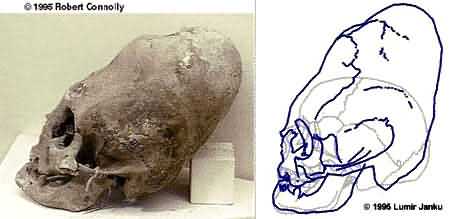
Láthatóan a torzító kötés serkenti a csontnövekedést..
Macrocephal crania
"A hellénisztikus és azt követo évszázadokban a Mediterrániumban nem muvelték, de szórvány leletek Európa minden részébol ismertek. A koponya deformálás számos kóros következménnyel járt: az orr melléküregek kifejlodésének elmaradása, az elülso koponyagödör térfogatának jelentos csökkenése, az intracraniális nyomás idült fokozódása, a clivus meredekségének megváltozása stb. (Józsa és Pap 1992). A torzítottak élettartama jelentosen alacsonyabb, mint a környezetük nem deformált tagjaié. A koponya formálását csecsemokorban kezdték, négy alapmódszere különítheto el, amelyek különbözo fejformát eredményeztek. Az Óvilágban többnyire kötéssel, az Újvilágban deszkák közé préselve alakították ki a kívánt fejformát."
.és a koponyatorzítás:
"The Anglo Saxons, the Swiss, the Scandinavians, the French and the Scythians in Asia practiced skull deformation; Turkic tribes of Avers and Hans considered it a badge of nobility. The ruling classes of the Ottoman Turks were basically Armenid."
"This ornamental custom was also practiced by north American 'Flat head' tribes of Chinook, Clatshop, and Salishan, as o distinctive mark of aristocracy. Among the Algonquin, such as the black-feet tribe, the hawk nose was of natural birth. So was it also among the Middle American Arawaks and Caribs."
Amerika deformál
Artificial deformation of the neonatal cranial vault is one form of permanent alteration of the body that has been performed by the human being from the beginning of history as a way of differentiating from others. These procedures have been observed on all continents, although it became widespread practice among the aborigines who lived in the Andean region of South America. It has been suggested that the expansion of this practice started with the Scythians from their original settlements in central Asia and spread toward the rest of Asia and Europe, and it is believed that Asiatic people carried this cultural custom to America when they arrived on the current coasts of Alaska after crossing the Strait of Behring. The practice of deforming newborn heads was present in the whole of the American continent, from North America to Patagonia, but cranial molding in neonates was most widely practiced in the Andean region, from Venezuela to Guyana, Colombia, Ecuador, Peru, Bolivia, Chile, and Argentina.
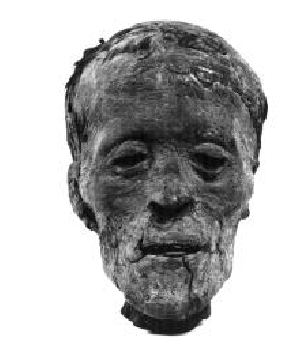 ŐSLAKOSOK
ŐSLAKOSOK
(ausztrálok voltak az első amerikaiak?)
Az amerikai koponyaformák 9000 - 7000 évvel ezelőtt változáson mentek át. Az addig kizárólagos negroid koponyákat egyre több helyen felváltotta a mongolid koponya. Pleistocene Australian Aboriginal crania: (kép is van!)
ANTHROPOLOGY IN AMERICA
The most important of these publications, and one that compares favorably in clearness of presentation and the validity and advanced nature of its conclusions with Crania Americana, was his Crania Aegyptiaca, published in 1844 and dealing with one hundred old and thirty-seven modern Egyptian skulls procured for Morton by a United States consul at Cairo, subsequently an
anthropological author of note, George R. Gliddon. Without entering into details, it will be sufficient to say that Morton through his studies recognized definitely that the valley of the Nile, both in Egypt and in Nubia, was originally peopled by a branch of the Caucasian race; and that "the present Fellahs are the lineal and least mentioned descendants of the ancient Egyptians; the latter being collaterally represented by the Tuaregs, Kabyles, Siwahs, and other remains of the Lybian family of nations."
Andok Crania
"Artificial cranial modification has ancient roots in Eurasia. The earliest cases in the archaeological literature date from the Bronze Age (ca. 2000—1000 BC; Firshtein 1974), among peoples of the Catacomb culture as well as those from southern Turkmenistan."
"This is within the territory of the earliest state in the Eurasian steppes, Chorasmia. Of the 26 excavated individuals from the Southern Tagisken cemetery, nine display some form of cranial alteration (34.6%; Table 1)."
"Evidence of intentional cranial modification exists in some of the earliest human occupations of the Andean area. The Chinchorro culture of extreme north Chile and southern Peru employed a very pronounced form of circular cranial vault modification over 4500 years ago."
"These cases show that the Tiwanaku state, which was a prestigious foreign power, was one worthy of emulating in cases of distant contact, while direct colonial control seems to have manifested differently in terms of cranial modification. Although not as pronounced and sweeping as the changes incurred during the Huns conquest of Eurasia, the changes associated with the expansion of Tiwanaku support the notion that as a cultural feature, vault modification is subject to the social changes and historical context in which it is practiced."
ECUADOR:
Különös koponyák láthatók Peruban, de a Titicaca tó népe is elég titokzatos...
KURGÁNOK - KOPONYÁK
Az adena nép eredete a múlt ködébe vész. Az ásatások során a moundokból vörös okkerrel festett csontok kerültek elő, s ez Kr. e. 2450-től ismert szokás a New York állambeli Vörös-tónál. A rövid fejű adenák emellett a koponyatorzítás gyakorlatával is éltek. Az újszülöttek még formálható koponyáját abroncsba fogták, így nyerték el szokatlanul magas homlokukat… Ez a szokás közép-amerikai eredetre utal, a mai Mexikóváros környéke ugyanis a legközelebbi hely, ahonnan hasonló koponyák kerültek elő.
Amerika
Adena nép - Észak Amerika
"By their skeletal remains in the earlier studies, the pre-Adena people were known to have had slender or thin bodies, and been "long-headed," with "narrow" skulls (dolichocranic), i.e. having a breadth of skull small in proportion to length from front to back. The Adena people weren't physically akin to these Archaic people. Generally the Adena had more massive bone structure, according to these same studies. The pre-eminent theory of Adena origin at the time was that their ancestry had come from Mexico or even further south"
...és nyugatabbra:
"Artificial cranial deformation is widespread among the prehistoric Puebloans of the American Southwest. From Pueblo I (approx. 700-900 AD) through Pueblo III (approx. 1100-1300 AD) two types of deformation are commonly described, lambdoidal and occipital flattening, with the former being by far
the most common. It was surprising, then, when two cases of obelionic flattening were discovered in a small skeletal series from the Gallina phase site of Canada Simon I, Rio Arriba County, New Mexico"
Mound
Szemmel láthatólag sok adena szokást őrzött meg a moundépítők második csoportja, a hopewell indián nép. Úgy tűnik, ezek a külső tulajdonságaikban különböző, hosszú fejű emberek foglalták el az adenák területét, és az Ohio, valamint az Illinois folyók völgyében kultúrájuk fényűzőbb változatát alakították ki. A koponyatorzítás szokását megtartották, de a temetkezési dombok hagyományát a maguk módján továbbfejlesztették, sokkal nagyobb és bonyolultabb földhalmokat emeltek.
Csendben jegyezném meg: Európában Kr.e. 3000 - 2500 körül eltűnik a koponyatorzítás szokása. Ez idő tájt jelenik meg az amerikai nagy tavak környékén. Ott a maya néptől nem vehették át, mert ugye, azok később éltek...
A nyugati partoknál:
"Áht a Vancouver sziget (Észak-Amerika) nyugati partján lakó indiánok neve, amelyet az utazó Sproat adott nekik, náluk a legtöbb nemzetségnek a neve aht vagy malit (magyarul: kunyhó, ház) szótaggal végződvén. Fejöket mesterségesen torzítják, l. Koponyatorzítás."
Koponyatorzítás az Andokban:
"During the 5th century A.D., the center of ancient Peruvian civilization shifted from coastal cultures such as the Moche, to high Andes cultures such as the Tiwanaku. On the edge of Lake Titicaca sat the urban settlement of the Tiwanaku."
..és a Föld másik oldalán:
"The cave in question lies near Lanang, on the east coast of Samar, on the bank of a river, it is said. It is, as the traveler reports, celebrated in the locality "on account of its depressed gigantic crania, without sutures." "
"Chinese and Korean pottery are said to have been found with the deformed crania. Similar deformations exist in the Celebes, New Britain, etc. Head-shaping has been universal, cf. A. B. Meyer, Ueber Kunstliche deformirte Schaedel von Borneo und Mindanao and ueber die Verbreitung der Sitte der Kunstlichen Schaedeldeformirung, 1881, 36 pp., 4. deg.--Translator.)"
"Public attention was first aroused about thirty years ago concerning skulls from Samar and Luzon, gathered by F. Jagor from ancient caves, to furnish the proof of their deformation. Up to that time next to nothing was known of deformed crania in the oriental island world. First through my publication the attention of J. G. Riedel, a most observant Dutch resident, was called to the fact that cranial deformation is still practiced in the Celebes"
KIS KOPONYÁK
Az Andokban nem csak nagy fejű magyarok, de furcsa, kisfejű (headless) csontvázak is kerültek elő, pl. a perui sivatagból. Betegségnek mondják: (Hemicephalia) és pár képpel érzékelhetőbbé teszik a külsőt.
Néha a rómaiak is elvesztették a fejüket.

Patika Magazin
A koponyatorzítás módszerét elsőként Hippokratész ismertette, s arra a véleményre jutott, hogy a Fekete-tenger partján élt ókori népek a hosszúfejűeket tekintették a legnemesebb emberfajtának, s ezért ilyen alakúra formálták a csecsemők fejét ("Peri horeon kai topon"). Hasonló leírást olvashatunk Plinius ("Historia naturalis"), továbbá Strabo ("Geographikon") műveiben. A szokás kialakulásában – feltehetően a hódító törzs és az autochton őslakosság fejformájának különbözősége (brachy- és dolichokephalia) játszhatott szerepet, amit az is bizonyít, hogy Plinius szerint a legelőkelőbbek gyermekeinek torzították a koponyáját. Ó-Peruban is hasonló volt a helyzet. Torquemada arról tudósít, hogy az indiánok bizonyos torzított koponyaformát az előkelőség jelének tartottak, de csak az inka királyi ház és néhány azzal "kitüntetett" család tagjait illette meg a torony alakú forma. A spanyol hódítás után, a III. limai zsinat (1585) pogány maradványnak bélyegezte meg a deformálást, s azt eltiltották. A rendelkezés szövegéből pontosan ismerjük a különböző formákat.
Hawaii
A unique cranial asymmetry previously noted in the skeletal remains from Mokapu, O'ahu, Hawai'i, is described. The anomaly involves an indentation of one or both of the occipital condyles and facial and vault asymmetry...
A high rate of occurrence of the anomaly (1.8%) is found in the skeletal remains from the Hawaiian Islands, but it has been documented in only two instances outside Hawai'i.
Magyar antropológusok, kiknek a munkája angolul sem nagyon hozzáférhető. Magyarul meg pláne...
Gót koponya
"Keszthelyről két gazdag temetkezésüket is ismerjük. 456-ban a keleti gótok jelentek meg itt, Thiudimer király Nagy Theoderik apja székhelye a fenéki erődben volt. Temetőjükből több torzított koponya került elő. 535 után a langobardok megszállták környékünket is, majd Itáliába vonulásuk után, 568-tól az avar birodalom része lett vidékünk."
"A kétoldali összenyomás következtében a koponya hossz- és magassági átméroje megnagyobbodik. Errol számolt be Lenhosséknak személyesen Vámbéry Ármin is, a Kaszpi-tenger keleti partján élő nomád türkomannoknál szerzett tapasztalatairól. Körkörös összenyomásnál közvetlenül születés után a csecsemo fejét összenyomják, majd körkörösen pólyát tekernek fel, amelyet elöl a homlokon az orrgyök felett, hátul a nyakszirten magasan rögzítenek. Amerika „legszebb” brachikefal torzkoponyáit Peru és Mexikó balzsamozott hullái között találták. A Krímben több makrokefal koponyát találtak egy-egy sírban, mint az európai leletekben."
"When the Visigoth Athaulf married Galla Placidia, the daughter of Theodosius ?, in 414, at a ceremony that took place at the home of a leading citizen of Narbonne, the bride and groom were both dressed in Roman style, while the gifts that Athaulf made to Galla included precious stones that the Goths had carried off from Rome four years previously. Yet, as with non-Romans known to have adopted Roman names, the practices of Athaulf were those of a member of an elite group. At other levels of society, influences flowed in the opposite direction, as in the practice of cranial deformation. Artificially deformed skulls are known among the Huns, but they were also to be found among a wide range of peoples, among them Sarmatians, Avars, Goths, Gepids and Burgundians."
(türingians, alans... )
'golgothah', of Chaldee origin (compare gulgoleth 1538); the skull
A Golgotától a gótokig...
" 1538 \htl,GOl]GU\n gulgoleth {gul-go'-leth} by reduplication from H1556; TWOT - 353l; n f
[ -- Word Etymology & Grammar ]
AV - poll 7, scull 2, every man 2, head 1; 12
1) head, poll, skull
1a) skull
1b) head, poll (of census)"
“Calvary is the Latin name Calvaria, which was used as a translation of the Greek word Kranion, by which the Hebrew word Gulgoleth was interpreted, “the place of a skull.””
"Golgotha [EBD]
the common name of the spot where Jesus was crucified. It is interpreted by the evangelists as meaning "the place of a skull" (Matt. 27:33; Mark 15:22; John 19:17). This name represents in Greek letters the Aramaic word Gulgaltha, which is the Hebrew Gulgoleth (Num. 1:2; 1 Chr. 23:3, 24; 2 Kings 9:35), meaning "a skull." It is identical with the word Calvary (q.v.). It was a little knoll rounded like a bare skull."
"hed (ro'-sh, Aramaic re'sh, and in special sense gulgoleth, literally, "skull," "cut-off head" (1 Ch 10:10), whence Golgotha (Mt 27:33; Mk 15:22; Jn 19:17); mera'ashah, literally, "head-rest," "pillow," "bolster" (1 Ki 19:6); qodhqodh, literally, crown of the head (Dt 28:35; 33:16,20; 2 Sam 14:25; Isa 3:17; Jer 48:45); barzel, "the head of an axe" (Dt 19:5, the Revised Version margin "iron"; 2 Ki 6:5); lehabhah, lahebheth, "the head of a spear" (1 Sam 17:7); kephale): The first-mentioned Hebrew word and its Aramaic form are found frequently in their literal as well as metaphorical sense."
 Fejformák és méretük:
Fejformák és méretük:
"We do not know of any fact which proves that the mere increase of the size of the brain is tantamount to an advance in mental ability." (61) He pointed out that the famous phrenologist himself, Gall, Anatole France the French novelist, and Gambetta the French statesman, each had a cranial capacity of about 1100 cu. cm. At the other extreme, we have the English writer Dean Jonathan Swift, the English poet Lord Byron, and the Russian novelist Turgeniev, all with a cranial capacity of about 2000 cu. cm. (62) So Weidenreich properly posed the question, "Had Turgeniev really twice the mental ability of Anatole France?"
MÖZS (Tolna m.)
"A Mözs Icsei-dűlőben az 1990-es évek közepén feltárt 68 síros leletegyüttes a Kárpát-medence eddig feltárt temetői közül a legtöbb torzított koponyát tartalmazó rejtő temető. Az V. század közepére datálható, a jelenlegi régészeti interpretáció szerint keleti gót emlékanyagot mutató temetkezések az 1968-ban feltárt 28 síros, családi kapcsolatokat mutató szériához tartozását régészeti módszerekkel sikerült igazolni. A 26 női, 21 férfi és 21 gyermektemetkezésből 36 esetben biztosan, 2 esetben valószínűsíthetően igazolható valamilyen mértékű koponyatorzítás."
Van benne valami...
 "Joachim Werner 1956-os tanulmánya a koponyatorzítás szokását a hunok vándorlási vonala felrajzolásának egyik lehetőségeként kezelte. A koponyatorzítás szokása keleti irányba azonban nem vezethető végig: az adatok amellett szólnak, hogy a hun népelemek a mai Tadzsikisztán területén találkozhattak koponyatorzítást végző alán-török népekkel. A hunokról szóló korabeli beszámolók (Ammianus Marcellinus, Priszkosz rhetor) nem említették a koponyatorzítás szokását. [Ugye, A.M. saját bevallása szerint életében nem látott egy hunt sem. Priskos rhetor írásaiból meg nem maradt fenn semmi. P.I.] A nyugati vándorlás során hun katonai nyomásra létrejött, különböző hun törzsek által vezetett államalakulatok pénzverésén azonban megjelennek a jellegzetes torzított koponyaformák, amiről Charles Ujfalvy, azaz Újfalvy Károly magyar származású utazó is beszámolt. A Kárpát-medencében szintén a hunok megjelenéséhez köthető a koponyatorzítás szokása. A hunok hamvasztásos temetkezési kultúrája miatt (lásd Attila égetése...P.I.) csak a hunokhoz csatlakozott és itt letelepedett katonai segédnépek, az alánok a keleti gótok és a gepidák temetkezéseiben tudjuk vizsgálni a torzítási típusokat. A szokás az avar birodalomban továbbélő germánok területén a 7.század elejéig fennmaradt, arról, hogy az avar népességek is éltek volna a koponyatorzítás szokásával, nincsen kézzel fogható bizonyíték. A kárpát-medencei definiált torzított leletek száma kétszáz körül van, vannak egyedi lehetek, néhány lelőhelyen viszont nagy számban kerültek elő a makrokefál koponyák. Tudománytörténetileg kiemelkedő a Kiszombor-B gepida lelőhelyről Bartucz Lajos által 1936-ban közölt 20 db torzított koponyalelet. Később Lipták Pál, Nemeskéri János, Kiszely István is foglalkozott a témával. Pap Ildikó 1983-ban közölte a fenékpusztai germán temető, Fóthi Erzsébet 1997-ben a szegvár-oromdűlői avar kori temető torzított koponyaleleteit. 1960-ban Salamon Ágnes Mözs lelőhelyen tárt fel 28 germán sírt, amely temetőrészhez 1995-96-ban még újabb 68 sír is feltárásra került. A mintegy 100 sírnak fele torzított koponyákat tartalmazott. Ha a Kárpát-medencében feltárt torzított koponyás sírok területi elhelyezkedését tanulmányozzuk, az a következtetés adódik, hogy a germánok által lakott területeken a legnagyobb a szokás frekvenciája: a leletek száma a Dunántúlon, annak is a délkeleti régiójában a legnagyobb. Viminaciumban is feltártak egy gepida temetőt, ahol több mint húsz torzított koponya került elő. A kárpát-medencei leletekre leginkább az ún. fronto-occipitális típusú torzítás a jellemző, a szokás mind a férfiak, mind a nők körében is kimutatható."
"Joachim Werner 1956-os tanulmánya a koponyatorzítás szokását a hunok vándorlási vonala felrajzolásának egyik lehetőségeként kezelte. A koponyatorzítás szokása keleti irányba azonban nem vezethető végig: az adatok amellett szólnak, hogy a hun népelemek a mai Tadzsikisztán területén találkozhattak koponyatorzítást végző alán-török népekkel. A hunokról szóló korabeli beszámolók (Ammianus Marcellinus, Priszkosz rhetor) nem említették a koponyatorzítás szokását. [Ugye, A.M. saját bevallása szerint életében nem látott egy hunt sem. Priskos rhetor írásaiból meg nem maradt fenn semmi. P.I.] A nyugati vándorlás során hun katonai nyomásra létrejött, különböző hun törzsek által vezetett államalakulatok pénzverésén azonban megjelennek a jellegzetes torzított koponyaformák, amiről Charles Ujfalvy, azaz Újfalvy Károly magyar származású utazó is beszámolt. A Kárpát-medencében szintén a hunok megjelenéséhez köthető a koponyatorzítás szokása. A hunok hamvasztásos temetkezési kultúrája miatt (lásd Attila égetése...P.I.) csak a hunokhoz csatlakozott és itt letelepedett katonai segédnépek, az alánok a keleti gótok és a gepidák temetkezéseiben tudjuk vizsgálni a torzítási típusokat. A szokás az avar birodalomban továbbélő germánok területén a 7.század elejéig fennmaradt, arról, hogy az avar népességek is éltek volna a koponyatorzítás szokásával, nincsen kézzel fogható bizonyíték. A kárpát-medencei definiált torzított leletek száma kétszáz körül van, vannak egyedi lehetek, néhány lelőhelyen viszont nagy számban kerültek elő a makrokefál koponyák. Tudománytörténetileg kiemelkedő a Kiszombor-B gepida lelőhelyről Bartucz Lajos által 1936-ban közölt 20 db torzított koponyalelet. Később Lipták Pál, Nemeskéri János, Kiszely István is foglalkozott a témával. Pap Ildikó 1983-ban közölte a fenékpusztai germán temető, Fóthi Erzsébet 1997-ben a szegvár-oromdűlői avar kori temető torzított koponyaleleteit. 1960-ban Salamon Ágnes Mözs lelőhelyen tárt fel 28 germán sírt, amely temetőrészhez 1995-96-ban még újabb 68 sír is feltárásra került. A mintegy 100 sírnak fele torzított koponyákat tartalmazott. Ha a Kárpát-medencében feltárt torzított koponyás sírok területi elhelyezkedését tanulmányozzuk, az a következtetés adódik, hogy a germánok által lakott területeken a legnagyobb a szokás frekvenciája: a leletek száma a Dunántúlon, annak is a délkeleti régiójában a legnagyobb. Viminaciumban is feltártak egy gepida temetőt, ahol több mint húsz torzított koponya került elő. A kárpát-medencei leletekre leginkább az ún. fronto-occipitális típusú torzítás a jellemző, a szokás mind a férfiak, mind a nők körében is kimutatható."
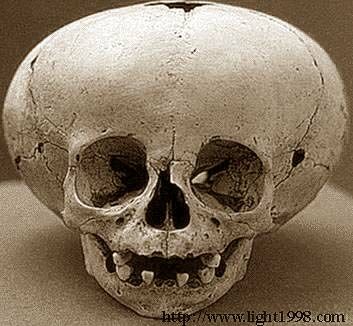 Koponya - a vándorok nyoma
Koponya - a vándorok nyoma
De hol gyakori a 2. század előtt a torzítás?
"Lenhossék mérései szerint a szélességi index magyar eredetu csontkoponyákon: 82,9. Élo magyar emberek fején mérve: 90,4 – 76,6. Vagyis csontkoponyán és élokön mérve egyaránt a magyarok erosen brachicephalok.
Magassági index = a koponyamagasság X 100 / koponyahossz. Lenhossék mérései szerint csontkoponyákon: 74,7; Élokön: 78,1 – 55,5. Mi magyarok platycephalok vagyunk.
Az orrmelléküregeket illetoen az az érdekes különbség észlelheto, hogy a homloküreg (homloköböl, sinus frontalis) emberen általában kifejlett, vastag csontú egyéneknél nagyobb méretu, a majmok többségében viszont hiányzik."
"Bartucz provided the details of artificial skull deformation, a wide-spread practice among the Gepids. He drew his general conclusions on the population from the extremely thorough examination of 54 well preserved skulls. Bartucz stated that the Gepids of Kiszombor formed a special race conglomerate that was made up of elements of the Nordic, Mediterranean, East-European, Turanoid, Mongolid and Palaeo-Asiatic races. The tall stature, long-skulled, high and narrow faced Nordic type was the dominant component. Bartucz considered individuals with these characteristics the true Gepids."
"Pap (1983, 1984, 1985) described 21 circularly deformed skulls from the 5th century location of Keszthely-Fenékpuszta. This site was classified Gothic-Alan on the basis of the grave-goods uncovered there."
"Archaeological remains show that the Bulgars had the typical culture of the nomadic equestrians of Central Asia. Anthropological data collected from early Bulgar necropolises from Bulgaria and the Ukrainian steppe shows that Bulgars were a high-statured Caucasoid people with slight Mongoloid features, and practiced artificial cranial deformation of the round type. The same sort of anthropological type and burial rites are common in Central Asia, where the practice of artificial skull deformation was also common in the area Ancient Greeks called Bactria and locals call Bukhara, Bokhara or Balhara. It has been argued that the latter was the land of origin of the Bulgars."
Torzítás
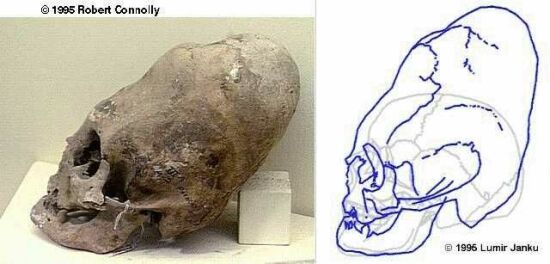 "Bóna Istvánt idézzük egy példa erejéig: A keletről, az alánokkal, majd hunokkal elterjedt mesterséges koponyatorzítás gyakori volt az V. századi gepidák körében, de a VI. századra eltűnik ez a különös »divat«."
"Bóna Istvánt idézzük egy példa erejéig: A keletről, az alánokkal, majd hunokkal elterjedt mesterséges koponyatorzítás gyakori volt az V. századi gepidák körében, de a VI. századra eltűnik ez a különös »divat«."
Érdekesség:
"Általános az a vélemény, hogy a skalpolás az észak-amerikai indiánok kizárólagos szokása. Ez a vélemény alapvetően téves. Elsősorban nem minden észak-amerikai indián törzs űzte a skalpolás szokását, hanem csak némelyik. Így például az irokézek és különösen a préri-indiánok.
Másodszor a skalpolás egyáltalán nem valami tisztán »indián találmány«. Így például már az ókori szerzők is feljegyzik ezt a szokást a dél-oroszországi szkítáknál.”"
'Augurok' - durvább változat:
“Kukoricatörés idején a hegyekben minden évben a város terén
földbeszúrt két rúd körül ünnepeltek az indiánok. Olyan magas volt ez a két
rúd, akár a hajóárboc, és emberfejekkel díszítették. Amint elhelyezték a
rudakat, a lakosság csoportonként, énekelve és kiáltozva felvonult a térre, és
az említett fejekre nyilazott. Ezután a papok a rudak elé egy bálványt
helyeztek, és annak egy indiánt meg egy lámát áldoztak fel. Az áldozatok vérével befestették a bálványt. Beleikből és szívükből pedig a jövőt olvasták ki…”
Franciao.:
"Földrészünkön a koponyakultusznak egyik korai nyomát a dél-franciaországi Roqueper Tuse-ban feltárt kelta szentély kőoszlopai őrizték meg. A mennyezetet tartó oszlopokba koponyaalakú fülkéket faragtak, és ezekbe helyezték el a koponyákat. A csontváz többi részét itt nem mutogatták."
Szarmata koponyatorzítás
"In Transylvania and in Oltenia no remains of the Sarmatians were found. In other areas of present day Rumania, they are numerous: Sarmatian tombs were discovered at 134 different sites. The funeral rite was inhumation. The tombs contain remains of men, women and children. In the tombs of women, jewels were often laid down and in those of children, bells of bronze. Of weapons, there are short swords and daggers. Their pottery, besides typically Sarmatian forms, contain also pieces of the Dacian and of the provincial Roman style. Very characteristic of these tombs is the circular or fronto-occipital deformation of the cranium by a bandage applied in childhood. This was regarded a sign of beauty and distinction. This rite was not practized by the Iazyges."
"During the 3rd century B.C. new powerful Sarmatian tribes were formed - the Aorsi, the Roxolani, the Alans, and the Lazyges advanced westwards. The massive Sarmatian western expansion ultimately brought down Scythian rule in the North Black Sea area between the end of the 3rd century and early 2nd century B.C. "
"One of the most characteristic traits of the Late Sarmatian culture was the artificial deformation of skulls. This was probably accomplished by tying a soft cloth around the infant's head forcing an elongation of the cranium. Don River and included the Southern Ural population."
Népvándorlás - gepidák
A gepidák - egy kelet-germán népcsoport - A Visztula mellől érkezett a Felső-Tisza vidékére 269-ben. Nyomuk - a számtalan torzított koponyával - visszavezethető a mai Lengyelország területére épp olyan jól, mint a gótoké Skandináviába.
A gepidák a kutyfejű hunok érkeztéig a Tisza - Kőrös környékén éltek, majd a hunoktól való félelmükben kissé délre húzódtak. Hamarosan csatlakoztak a minden népet leigázó hunokhoz, s együtt harcoltak a kereszteletlen barbárokkal. Attila király (aki nem a császártól v. a pápától kapta kinevezését) halála után a Kárpát-medence gepida uralom alá került Ard-arik (ez valami fehér erik) vezetésével. A gepida uralmat a LongoBard- Avar szövetség verte le 567-ben. (Bóna, 1974)
A gepida temetőket először Gáspár vizsgálta Hódmezővásárhely-Gorzsa térségében. A csontok zömét északi fajtának, kisebb hányadukat Ural-Altaj környékinek jegyezte. Ez utóbbiak lehettek a gepidák közé befurakodott hunok. Egy még kisebb hányaduk a kettő keveréke volt, s még a nőknél is előfordult mesterséges koponyatorzitás.
Bartucz (1936) Kis-zombor gepida temetőjét vette nagyító alá. Az írása két szempontból is jelentős. Egyrészt igen részletes leírást ad a gepida populációról, másrészt összefoglaló tanulmányt ad a mesterséges koponyatorzítás szokásáról, ami a Kárpát-medencében a gepidák között volt a leggyakoribb. A temetőben talált koponyák fele torzított volt. A temetőben igen sokféle embertípust talált: Nordikus, mediterrán, kelet-európai, turanoid, mongolid. ..mind gepida. Bár, ha a torzított koponyákat "hun"-nak vesszük, s levonjuk még a kelet-európai, mongol, turanid típusokat, akkor igen kevés "gepida" marad a csontok között. A koponyák un. occipito-frontal típusú (elöl lapított) fajtába tartoztak, ami igen gyenge utánzata a "magyarosabb"
kerek koponyatorzításnak. Bartucz leírja a torzítás módszerét is...
Lipták (1983) némileg eltérő eredményre jut vizsgálataiban. Ő a koponyatorzítás elterjedését nem a "hun" népekhez, hanem az alánokhoz köti . Vagyis a gepidák közé nem hunok, hanem alánok kerültek. (Feltehetően ezt mondaná a gótokra, burgundokra, türingekre is...) Lipták szerint a mongol területről érkező szokás (Ki ismeri a lelőhelyeket?) látható a sirokban feltárt mongolid torzított koponyák esetén. Persze, nordikus torzított koponyák is voltak ott...
Pap (1985) 21 db cirkulárisan deformált koponyát ír le a Valcum környéki ásatásból. Gót-alán leletként osztályozta őket. A csontok leginkább a szarmata populációra emlékeztették a szerzőt. Pap hangsúlyozta, hogy a deformáció nem etnikai jellemző. (Csak épp az alánokhoz köti a szokást...)
Kiszely (1978) rengeteg európai koponyatorzításos esetet dolgozott fel, de nem vont le belőlük történelmi és etnikai tanulságot.
A "hunok" (a linket nem ajánlom olvasásra)
"A Nyugatrómai Birodalom és a hun birodalom sajátságos szövetsége alakult ki viszont a germán burgundok ellen. Ez utóbbiak a növekvő hun nyomás elől mind nyugatabbra szorultak, a Rajna-Majna vidékre. [Sajnos, a burgundok is hunok voltak..P.I.] A burgundok törzsi állama Worms körül még 443-ig fennmaradt, amikor is a hunok felszámolták. (A hun fennhatóság következménye lehet a koponyatorzítás szokásának megjelenése az ottmaradt burgundoknál.)
Attila híre a Nyugatrómai Birodalmon kívül elhelyezkedő, illetve az abba betelepülő germán törzsekhez is eljutott. A hun uralkodó hatalma alá került türingiaiak körében is teret hódított a hun szokás szerinti koponyatorzítás. Az angolszász honfoglalás hagyományaiban is jelentékeny helyet kapott: az Angolszász Krónika kéziratainak "E" változata (Peterborough Chronicle) szerint 443-ban a britek segítségért fordultak Rómához a piktek ellen, de hiába, mert a rómaiak le voltak kötve Attila, a hunok királya elleni hadjárattal. Az északi Eddaban kapott helyet az Atli-dal, a német hősmondában (Nibelungen-Lied) pedig Etzel jutott szerephez. Az utóbbi monda ismerete alapján nevezhette a magyar Anonymus Attila király városának és Ecil- burgnak az aquincumi rommezőt. "
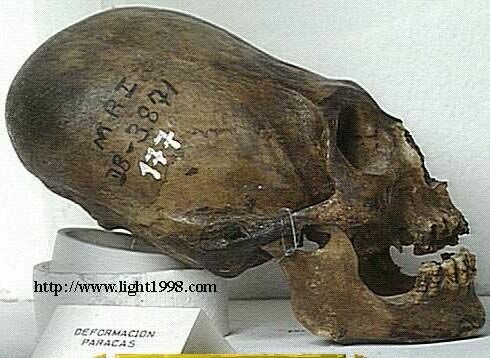 Kis-zombor területén a feltárt sirok felében torzított koponyájú embereket találtak.
Kis-zombor területén a feltárt sirok felében torzított koponyájú embereket találtak.
ARTIFICIAL DEFORMATION OF THE SKULL
..a gothai (Türingia) program...:-)
"The Greek and Roman writers had mentioned this practice, but it was long totally forgotten by the civilized world, until it was discovered, as an unheard-of wonder, to be the usage among the Carib Islanders, and several Indian tribes in North America. It was afterward found that the ancient Peruvians and Mexicans practised this art: several flattened Peruvian skulls are depicted in Morton's "Crania Americana." It is still in use among the Flat-head Indians of the north-western part of the United States."
"Professor Anders Retzius proved (see "Smithsonian Report," 1859) that the custom still exists in the south of France, and in parts of Turkey."
"that the Mound Builders and Peruvians of America, and the Neolithic people of France and the Canary Islands, had alike an extraordinary custom of boring a circular bole in the top of the skulls of their dead"
"Dr. L. A. Gosse testifies to the prevalence of the same custom among the Caledonians and Scandinavians in the earliest times; and Dr. Thurman has treated of the same peculiarity among the Anglo-Saxons. Crania Britannica," chap. iv., p. 38.)"
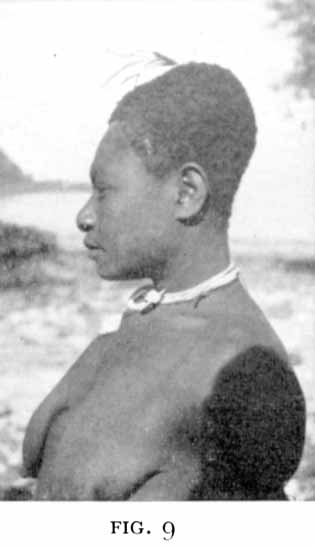 Itt is hunok..
Itt is hunok..
In 1849 a remarkable memoir appeared from the pen of M. Rathke, showing that similar skulls had been found near Kertsch, in the Crimea, and calling attention to the book of Hippocrates, "De Aeris, Aquis et Locu," lib. iv., and a passage of Strabo, which speaks of the practice among the Scythians. In 1854 Dr. Fitzinger published a learned memoir on the skulls of the Avars, a branch of the Uralian race of Turks. He shows that the practice of flattening the head had existed from an early date throughout the East, and described an ancient skull, greatly distorted by artificial means, which had lately been found in Lower Austria. Skulls similarly flattened have been found in Switzerland and Savoy. ...és a
többiek.
"the form of skull of a people whose likenesses are found on the monuments of Egypt and of America"
"Hippocrates tells us that the practice among the Scythians was for the purpose of giving a certain aristocratic distinction"
Arawak torzítás:
(Mint ismeretes, az ainuk nyelvén ARAWA=hét, s az első maori telepeseket is az Arawa kenoe szállította..)
A yanomamik földjéről már hosszú idővel ezelőtt tudtuk, hogy gyakorolják a koponyatorzítás szokását. Sőt!..
"Sir Robert Schomburgh found on some of the affluents of the Orinoco a tribe known as Frog Indians, whose heads were flattened by Nature, as shown in newly-born children." A környezettől kissé eltér a yanomami nép genetikai állománya is.. ..és ezen a tájon fordult elő valaha a Morbus Hungaricus nevű betegség, röviden TBC.
LINKEK:
Visegrádi képes históriák
Bulgár torzítások
Artificial deformation of the skull
Inca skull
Cranial deformation
Skeletal Collection
Szenti Tibor
Thabet Mona
Csontizületi elváltozások
Neandervölgyi koponyák
Pesti István
2008 január 22.

 ..még koponyák:
..még koponyák:
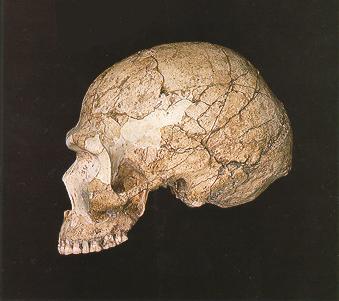
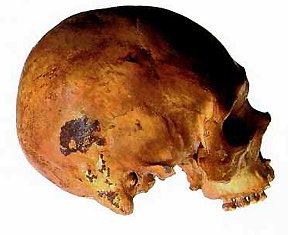
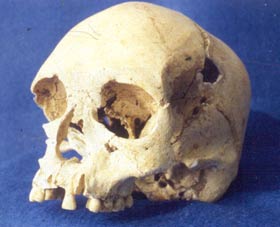
 Egyiptombanban elso sorban a XVIII. dinasztia korában vált gyakorlattá, és úgy tunik a fáraócsalád elojoga lehetett. Körkörös kötéssel formázták a kisdedek fejét (27. kép), ennek eredményeként a homlok laposabbá, a hátsó koponyagödör és nyakszirt–tájék megnyúlttá vált (28. és 29. kép). Az így torzított koponyán többnyire megfigyelheto a kötés okozta besüppedés, s ezt híven tükrözi Tutanhamons fejszobra.
Egyiptombanban elso sorban a XVIII. dinasztia korában vált gyakorlattá, és úgy tunik a fáraócsalád elojoga lehetett. Körkörös kötéssel formázták a kisdedek fejét (27. kép), ennek eredményeként a homlok laposabbá, a hátsó koponyagödör és nyakszirt–tájék megnyúlttá vált (28. és 29. kép). Az így torzított koponyán többnyire megfigyelheto a kötés okozta besüppedés, s ezt híven tükrözi Tutanhamons fejszobra. Mesterséges koponyatorzítás - Wikipédia
Mesterséges koponyatorzítás - Wikipédia

 ŐSLAKOSOK
ŐSLAKOSOK 
 Fejformák és méretük:
Fejformák és méretük: "Joachim Werner 1956-os tanulmánya a koponyatorzítás szokását a hunok vándorlási vonala felrajzolásának egyik lehetőségeként kezelte. A koponyatorzítás szokása keleti irányba azonban nem vezethető végig: az adatok amellett szólnak, hogy a hun népelemek a mai Tadzsikisztán területén találkozhattak koponyatorzítást végző alán-török népekkel. A hunokról szóló korabeli beszámolók (Ammianus Marcellinus, Priszkosz rhetor) nem említették a koponyatorzítás szokását. [Ugye, A.M. saját bevallása szerint életében nem látott egy hunt sem. Priskos rhetor írásaiból meg nem maradt fenn semmi. P.I.] A nyugati vándorlás során hun katonai nyomásra létrejött, különböző hun törzsek által vezetett államalakulatok pénzverésén azonban megjelennek a jellegzetes torzított koponyaformák, amiről Charles Ujfalvy, azaz Újfalvy Károly magyar származású utazó is beszámolt. A Kárpát-medencében szintén a hunok megjelenéséhez köthető a koponyatorzítás szokása. A hunok hamvasztásos temetkezési kultúrája miatt (lásd Attila égetése...P.I.) csak a hunokhoz csatlakozott és itt letelepedett katonai segédnépek, az alánok a keleti gótok és a gepidák temetkezéseiben tudjuk vizsgálni a torzítási típusokat. A szokás az avar birodalomban továbbélő germánok területén a 7.század elejéig fennmaradt, arról, hogy az avar népességek is éltek volna a koponyatorzítás szokásával, nincsen kézzel fogható bizonyíték. A kárpát-medencei definiált torzított leletek száma kétszáz körül van, vannak egyedi lehetek, néhány lelőhelyen viszont nagy számban kerültek elő a makrokefál koponyák. Tudománytörténetileg kiemelkedő a Kiszombor-B gepida lelőhelyről Bartucz Lajos által 1936-ban közölt 20 db torzított koponyalelet. Később Lipták Pál, Nemeskéri János, Kiszely István is foglalkozott a témával. Pap Ildikó 1983-ban közölte a fenékpusztai germán temető, Fóthi Erzsébet 1997-ben a szegvár-oromdűlői avar kori temető torzított koponyaleleteit. 1960-ban Salamon Ágnes Mözs lelőhelyen tárt fel 28 germán sírt, amely temetőrészhez 1995-96-ban még újabb 68 sír is feltárásra került. A mintegy 100 sírnak fele torzított koponyákat tartalmazott. Ha a Kárpát-medencében feltárt torzított koponyás sírok területi elhelyezkedését tanulmányozzuk, az a következtetés adódik, hogy a germánok által lakott területeken a legnagyobb a szokás frekvenciája: a leletek száma a Dunántúlon, annak is a délkeleti régiójában a legnagyobb. Viminaciumban is feltártak egy gepida temetőt, ahol több mint húsz torzított koponya került elő. A kárpát-medencei leletekre leginkább az ún. fronto-occipitális típusú torzítás a jellemző, a szokás mind a férfiak, mind a nők körében is kimutatható."
"Joachim Werner 1956-os tanulmánya a koponyatorzítás szokását a hunok vándorlási vonala felrajzolásának egyik lehetőségeként kezelte. A koponyatorzítás szokása keleti irányba azonban nem vezethető végig: az adatok amellett szólnak, hogy a hun népelemek a mai Tadzsikisztán területén találkozhattak koponyatorzítást végző alán-török népekkel. A hunokról szóló korabeli beszámolók (Ammianus Marcellinus, Priszkosz rhetor) nem említették a koponyatorzítás szokását. [Ugye, A.M. saját bevallása szerint életében nem látott egy hunt sem. Priskos rhetor írásaiból meg nem maradt fenn semmi. P.I.] A nyugati vándorlás során hun katonai nyomásra létrejött, különböző hun törzsek által vezetett államalakulatok pénzverésén azonban megjelennek a jellegzetes torzított koponyaformák, amiről Charles Ujfalvy, azaz Újfalvy Károly magyar származású utazó is beszámolt. A Kárpát-medencében szintén a hunok megjelenéséhez köthető a koponyatorzítás szokása. A hunok hamvasztásos temetkezési kultúrája miatt (lásd Attila égetése...P.I.) csak a hunokhoz csatlakozott és itt letelepedett katonai segédnépek, az alánok a keleti gótok és a gepidák temetkezéseiben tudjuk vizsgálni a torzítási típusokat. A szokás az avar birodalomban továbbélő germánok területén a 7.század elejéig fennmaradt, arról, hogy az avar népességek is éltek volna a koponyatorzítás szokásával, nincsen kézzel fogható bizonyíték. A kárpát-medencei definiált torzított leletek száma kétszáz körül van, vannak egyedi lehetek, néhány lelőhelyen viszont nagy számban kerültek elő a makrokefál koponyák. Tudománytörténetileg kiemelkedő a Kiszombor-B gepida lelőhelyről Bartucz Lajos által 1936-ban közölt 20 db torzított koponyalelet. Később Lipták Pál, Nemeskéri János, Kiszely István is foglalkozott a témával. Pap Ildikó 1983-ban közölte a fenékpusztai germán temető, Fóthi Erzsébet 1997-ben a szegvár-oromdűlői avar kori temető torzított koponyaleleteit. 1960-ban Salamon Ágnes Mözs lelőhelyen tárt fel 28 germán sírt, amely temetőrészhez 1995-96-ban még újabb 68 sír is feltárásra került. A mintegy 100 sírnak fele torzított koponyákat tartalmazott. Ha a Kárpát-medencében feltárt torzított koponyás sírok területi elhelyezkedését tanulmányozzuk, az a következtetés adódik, hogy a germánok által lakott területeken a legnagyobb a szokás frekvenciája: a leletek száma a Dunántúlon, annak is a délkeleti régiójában a legnagyobb. Viminaciumban is feltártak egy gepida temetőt, ahol több mint húsz torzított koponya került elő. A kárpát-medencei leletekre leginkább az ún. fronto-occipitális típusú torzítás a jellemző, a szokás mind a férfiak, mind a nők körében is kimutatható." Koponya - a vándorok nyoma
Koponya - a vándorok nyoma "Bóna Istvánt idézzük egy példa erejéig: A keletről, az alánokkal, majd hunokkal elterjedt mesterséges koponyatorzítás gyakori volt az V. századi gepidák körében, de a VI. századra eltűnik ez a különös »divat«."
"Bóna Istvánt idézzük egy példa erejéig: A keletről, az alánokkal, majd hunokkal elterjedt mesterséges koponyatorzítás gyakori volt az V. századi gepidák körében, de a VI. századra eltűnik ez a különös »divat«." Kis-zombor területén a feltárt sirok felében torzított koponyájú embereket találtak.
Kis-zombor területén a feltárt sirok felében torzított koponyájú embereket találtak. Itt is hunok..
Itt is hunok..